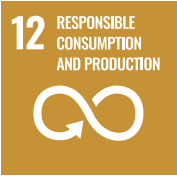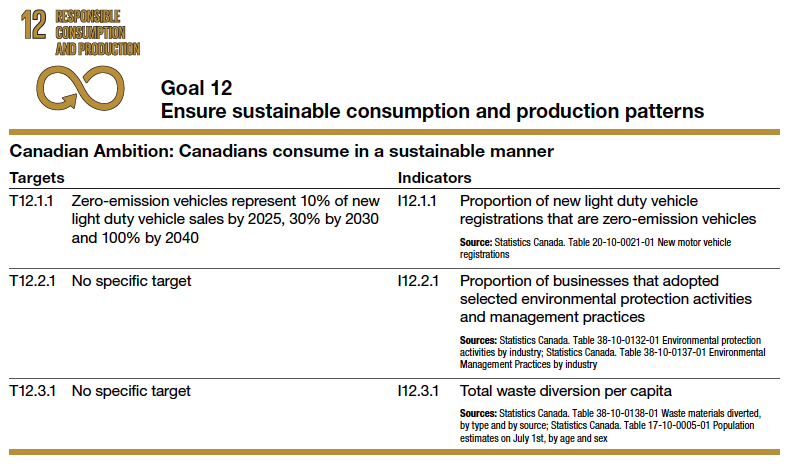Week 7
SDG #12 – Responsible Consumption and Production

Video
In this 10-minute video made available from the SDG Academy, Jeffrey Sachs looks at the challenges and opportunities of oil, gas, and mining in the context of responsible consumption and production for a sustainable future.
Analysis
In many counties, household consumption has been the main driver of economic growth[1].
Worldwide, consumption and production are the driving force of global economies and heavily rely on the use of the natural resources and the environment and in a way that continues to have destructive impacts on the planet[2]. Economic and social progress over the last century has been accompanied by environmental degradation that is endangering the very systems on which our future development and indeed, our very survival depends2. According to the latest projections, the global population could grow to 8.5 billion in 2030, and 9.7 billion in 2050. The equivalent of almost three planets could be required to provide the natural resources needed to sustain current lifestyles.
To promote responsible consumption and production, economic growth must align with existing resource volatility and shifting consumer preferences for safer, renewable, and more sustainable natural resources and products. Education is one of the most powerful tools for providing individuals with the appropriate skills and competencies to become sustainable consumers1.
The COVID-19 pandemic offers countries an opportunity to build recovery plans that will reverse current trends and change our consumption and production patterns towards a more sustainable future2. Sustainable consumption and production is about doing better with less. It is also about decoupling economic growth from environmental degradation, increasing resource efficiency, and promoting sustainable lifestyles. Sustainable consumption and production can also contribute substantially to poverty alleviation and the transition towards low-carbon and green economies.
Fast Facts
Water
- Humanity relies on less than 1% of all water on Earth to meet drinking water needs. This is because less than 3% of the world’s water is fresh (potentially drinkable), of which 2.5% is frozen in the Antarctica, Arctic, and glaciers;
- Although water is provided at no cost from nature, the infrastructure needed to extract, clean, and deliver it is expensive;
- More than 1 billion people still do not have access to fresh water;
- Three out of ten people (2.1 billion people, or 29% cent of the global population) were not using a safely managed drinking water service in 2015, whereas 844 million people still lacked even a basic drinking water service;
- Agriculture (including irrigation, livestock, and aquaculture) is the largest water consumer, accounting for 69% of annual water withdrawals globally;
- Water use has been increasing worldwide by about 1% per year since the 1980s;
- Humans are polluting water in rivers and lakes faster than nature can recycle and purify;
- Industry (including power generation) accounts for 19% and households for 12%;
- Excessive water use contributes to the global water shortages (stress);
- Over 2 billion people live in countries experiencing high water stress;
Energy
- Commercial and residential energy use is the second most rapidly growing area of global energy use after transport;
- Households consume 29% of global energy and contribute to 21% of resultant CO2 emissions;
The global electrification rate reached 89% in 2017 (from 83% in 2010), still leaving about 840 million people without access; - If people worldwide switched to energy efficient lightbulbs, the world would save US$120 billion annually;
- The share of renewable energy in total energy consumption has reached 17.5% in 2015;
- By the end of 2015 there were over 1 billion cars worldwide, with the number of vehicles continuing to grow;
- Between 2010 and 2017, the percentage of the population relying on clean cooking solutions grew by an annual average of 0.5% points;
Food
- The food sector accounts for 30% of the world’s total energy consumption and accounts for 22% of total Greenhouse Gas emissions;
- Each year, an estimated one third of all food produced goes to waste. This is equivalent to 1.3 billion tonnes of food, worth 1 trillion dollars that ends up getting thrown out, rotting in the bins of consumers and retailers, or spoiling due to poor transportation and harvesting practices;
- 144 million children under age 5 were affected by stunting in 2019, while 38 million children under the age of 5 were overweight or obese that same year;
- Land degradation, declining soil fertility, unsustainable water use, overfishing and marine degradation are all lessening the ability of the natural resource base to supply food.
Why it Matters
Why should I care about responsible consumption and production?
Economic and social progress over the last century has been accompanied by environmental degradation that is endangering the very systems on which our future survival depends. These current patterns of production and consumption must be changed for our own welfare and that of future generations. Human health and the environment are intrinsically linked, yet we carry on as business as usual, guided by unrealistic notions of infinite economic development and growth that ignores the reality that we live on a planet with finite resources
Targets and Indicators for Canada
Below is Canada’s approach to measuring progress on SDG #12 – Responsible Consumption and Production. Note the targets and indicators chosen[3].

Recommended Reading
- United Nations. (2021). The Sustainable Development Goal Report, 2020. Ensure sustainable consumption and production patterns.
- Global Affairs Canada. (2018). Canada’s Implementation of the 2030 Agenda for Sustainable Development: voluntary national review. ↵
- United Nations. (2021). Sustainable Development Goals. ↵
- Statistics Canada. (2021). The Canadian Indicator Framework for the Sustainable Development Goals - 2021. ↵

